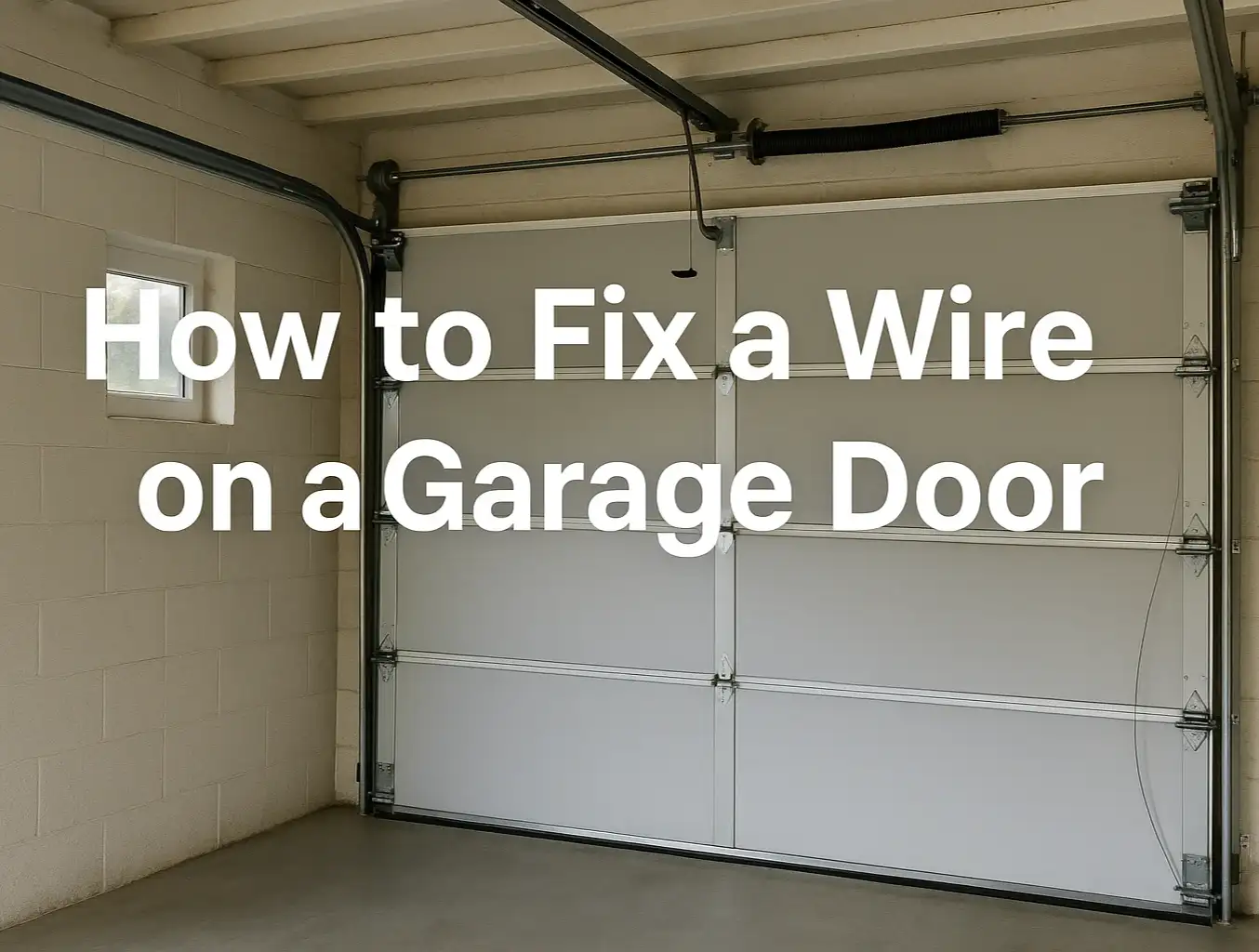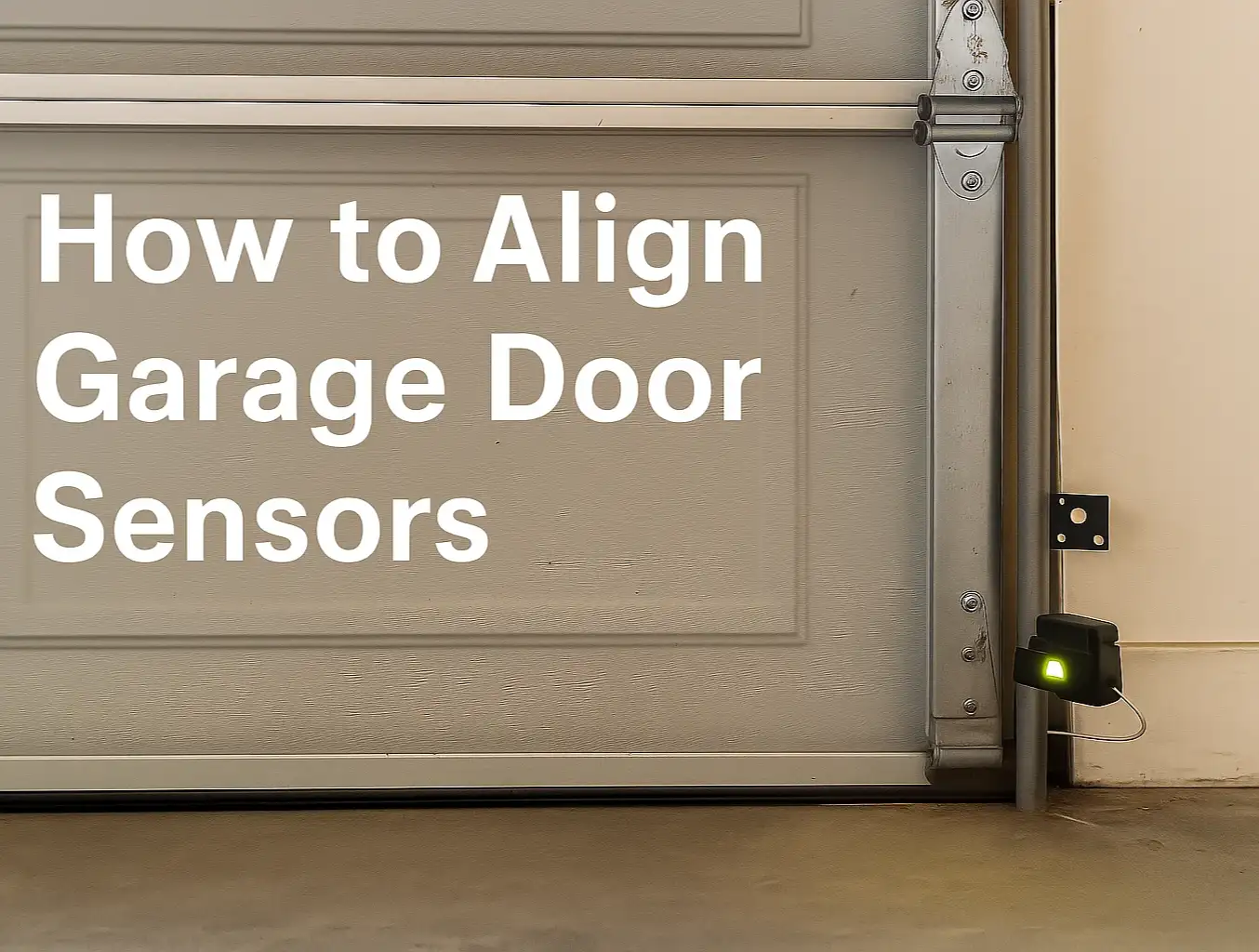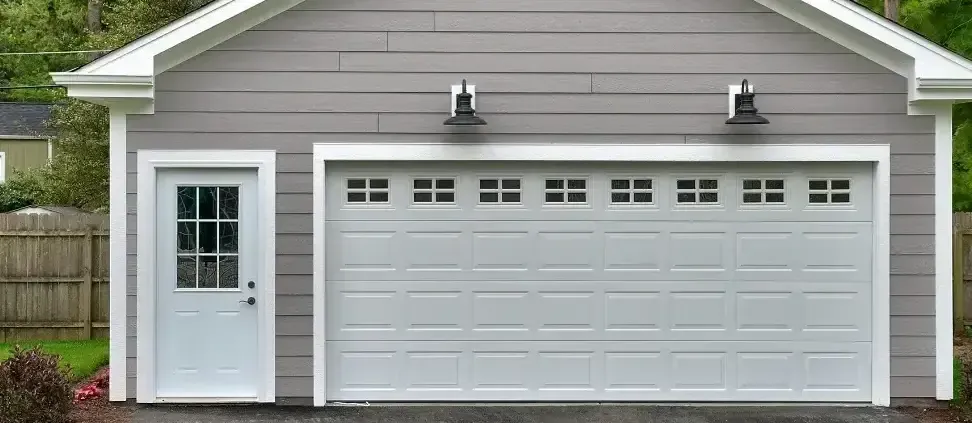How to Bypass the Garage Door Sensors: Causes & Fixes
Published: Oct 21, 2025
A nor’easter knocks out power on your block, the opener reboots, and your photo-eye sensors blink out of sync. The door starts to close, then snaps back up, leaving your tools on display. Often, that’s a misaligned or obstructed photo-eye safety sensor. While you might want a quick workaround, learning how to bypass the garage door sensors should be treated as a one-time, emergency step to get the door closed. Federal safety standards, such as UL 325, require these sensors to prevent entrapment. This guide from Up & Down Garage Doors explains the temporary override and why a permanent repair is the only safe long-term solution.
Safety Warning
Overriding your garage door sensors is not a long-term fix. The system protects people, pets, and property from the force of a closing door. Use this emergency procedure only to secure the garage until you can make a proper repair or schedule a professional service call. Do not disable the garage door sensors permanently — it creates a serious safety risk and liability. Close the door once, then address the cause right away so all safety features work again.
How to Know if Your Sensors are the Problem
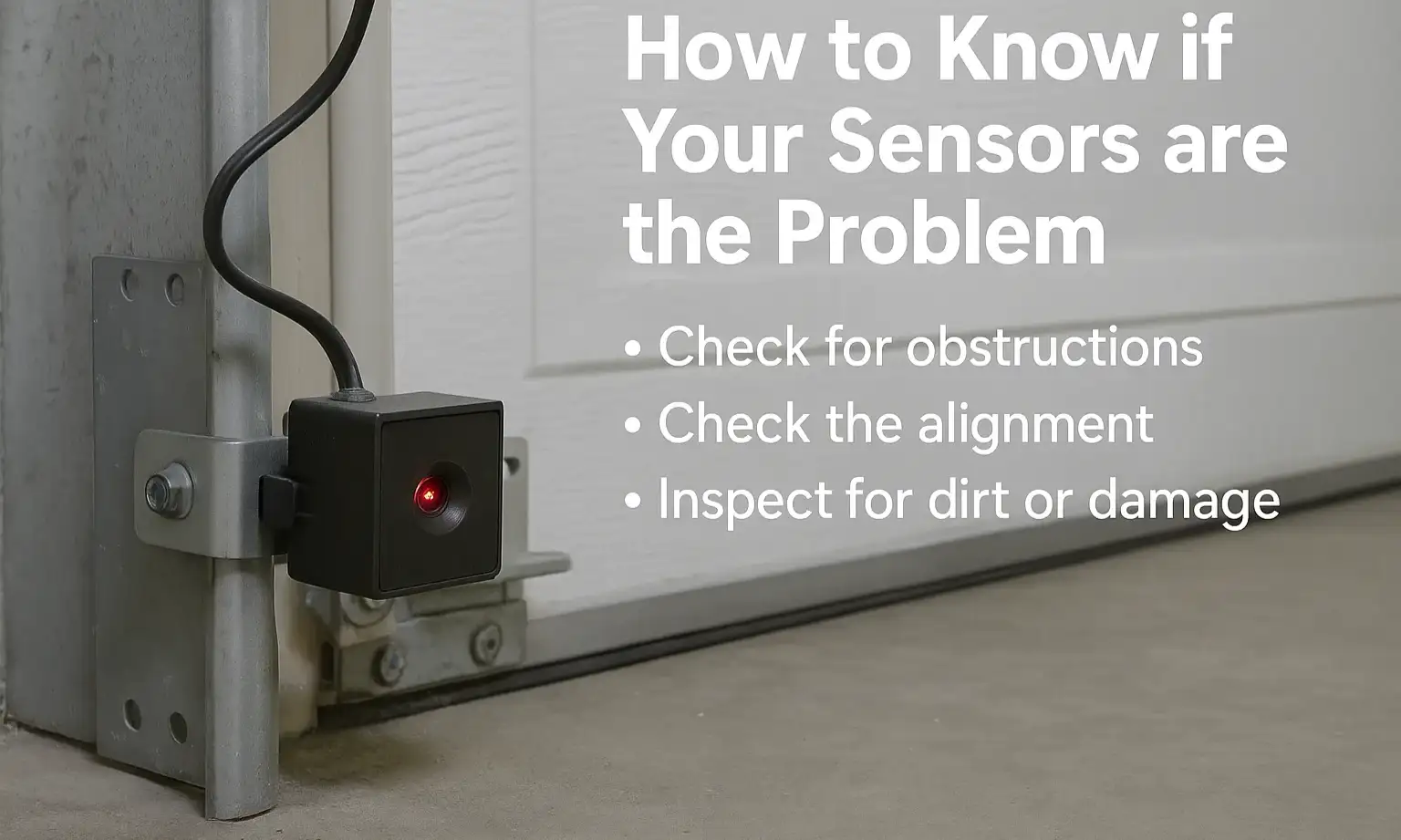
Before you try to override the garage door sensors, it’s important to confirm they are the source of the issue. The photo-eye sensors are two small boxes located a few inches off the floor on either side of your garage door tracks. One sends an infrared beam, and the other receives it. If that beam is blocked or out of alignment, the garage door won’t close.
Here is a quick diagnostic checklist:
- Check for obstructions: Look for objects like tools, trash cans, or even spiderwebs that might be blocking the beam’s path.
- Check the alignment: The sensors must be pointed directly at each other. Most units have LED indicator lights. Typically, both lights will be solid (e.g., one green, one amber) when alignment is correct. If a light is blinking, the sensors are likely misaligned.
- Inspect for dirt or damage: Wipe each lens with a soft cloth and look for loose or cut wires at the brackets.
If these steps don’t solve it and you suspect your garage door sensors are not working, you may need a temporary emergency procedure to disable the garage door sensors and force the garage door to close once. After that, fix the cause or schedule a professional repair service with Up & Down Garage Doors.

The Emergency Bypass Method: A Step-by-Step Guide
If your garage door won’t close and you’ve confirmed the sensors are the likely cause, this method lets you temporarily force the garage door to close. This is an emergency procedure only.
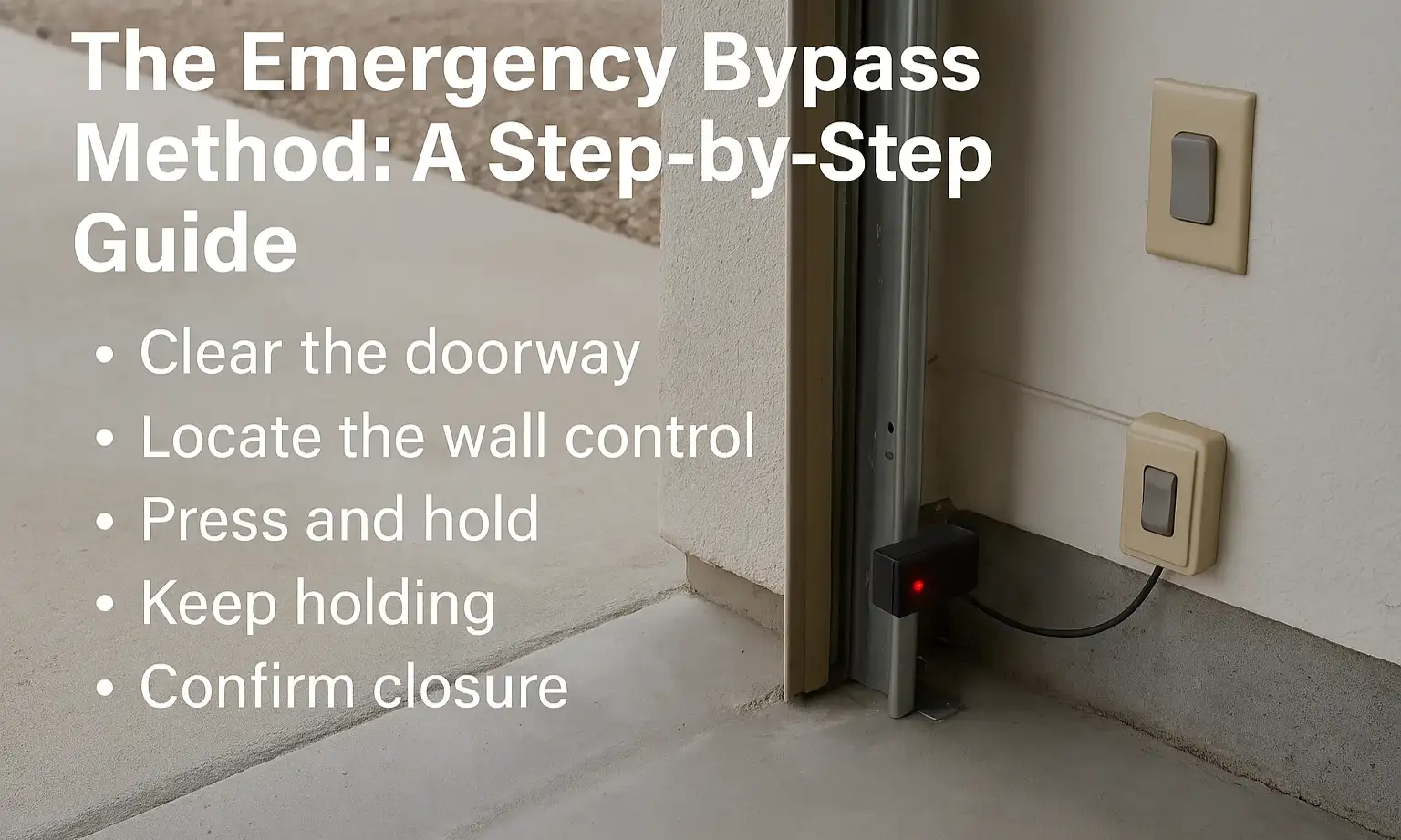
- Clear the doorway: Make sure no people, pets, or objects are in the door’s path.
- Locate the wall control: Go to the main wall-mounted control panel inside your garage. This method does not work with a portable remote.
- Press and hold: Firmly press and hold the Close button on the wall panel.
- Keep holding: Do not release the button. The door will start moving down. You must maintain constant pressure on the button for the entire duration of its travel. If you let go, the door will immediately reverse and open again.
- Confirm closure: Once the door makes contact with the floor, you can release the button.
The door is now secure, but the safety sensors are still nonfunctional. The problem is contained, not solved. For fast help restoring full garage security, schedule a professional repair service with Up & Down Garage Doors.

Immediately Re-engage or Repair Your Safety System
After you bypass the sensors to close the door, the system’s most important safety feature is inactive. The opener will likely not close via remote, and the underlying fault still exists. Next, realign the sensors or repair any damaged wiring and brackets. The guide by Up & Down Garage Doors on how to tell when to replace your garage door sensor helps you decide whether it’s a quick adjustment or a parts swap.
Conclusion
If you take one thing from this guide, let it be this: when you search how to bypass the garage door sensors to solve a late-night problem, it’s a one-time, emergency move to get the door down — nothing more. Use the press and hold override to secure the garage, then fix the cause right away so the photo-eyes and safety features are back on duty.
Once the door is closed, go straight to repairs. Clean the lenses, realign the eyes, and check the wiring and brackets. If the problem keeps coming back or parts are damaged, schedule a visit with Up & Down Garage Doors. We’ll get the sensors working, retest your opener, and make sure your door closes safely and reliably going forward.
Frequently Asked Questions
Can I just cut the wires to bypass the sensors?
Absolutely not. Cutting the sensor wires is dangerous and will likely make the opener stop working. Modern openers have a fail-safe that prevents the door from closing if they don’t get a signal from the sensors.
Why does my garage door only reverse sometimes?
Intermittent problems are often caused by environmental factors. For example, direct sunlight on one of the sensors can trick the receiver into thinking the beam is blocked, causing the door to reverse.
Is it illegal to permanently disable garage door sensors?
Not usually in a criminal sense for homeowners, but it’s against UL 325 safety standards and may violate local codes. A licensed technician won’t remove or bypass required sensors because doing so creates a serious hazard and liability and can void the opener warranty or fail an inspection. If your sensors aren’t working, fix or replace them — don’t disable them.
